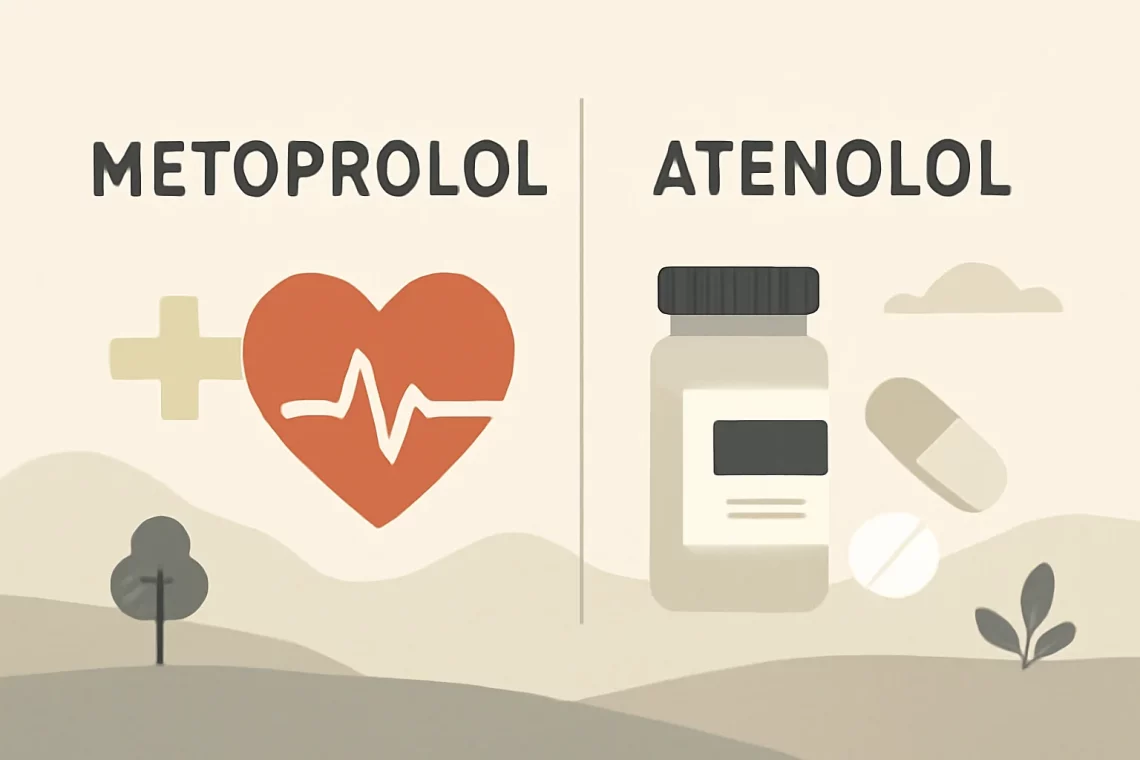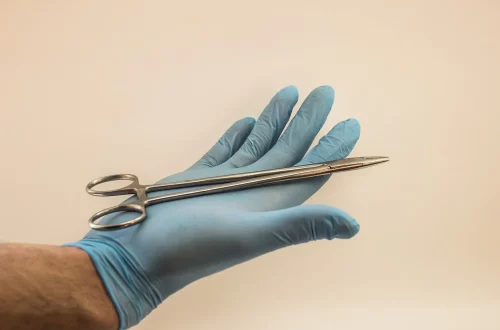-
Metformin vs Rybelsus: Which Diabetes Treatment is Right for You?
Metformin and Rybelsus are two medications frequently discussed in the realm of diabetes management, each with its unique characteristics and benefits. Understanding the differences, benefits, and mechanisms of action of these drugs is crucial for patients, healthcare providers, and anyone interested in diabetes care. As diabetes continues to be a prevalent health concern worldwide, effective management strategies are essential for improving patients’ quality of life and preventing complications associated with the disease. Metformin has long been regarded as a first-line treatment for type 2 diabetes, with a well-established safety and efficacy profile. It primarily works by improving insulin sensitivity and decreasing liver glucose production, thereby helping to regulate blood sugar…
-
Metoprolol vs Atenolol: Key Differences and Similarities Explained
Metoprolol and atenolol are two widely prescribed medications belonging to a class of drugs known as beta-blockers. These medications are primarily used to manage cardiovascular conditions, including hypertension, heart failure, and certain types of arrhythmias. Both metoprolol and atenolol function by blocking the effects of adrenaline on the heart and blood vessels, leading to a decrease in heart rate and blood pressure. This mechanism of action makes them effective in reducing the workload on the heart and improving overall cardiovascular health. The choice between metoprolol and atenolol can depend on various factors, including the specific health condition being treated, patient response to medication, and potential side effects. While both drugs…
-
Hydrochlorothiazide vs Indapamide: Key Differences Explained
High blood pressure, also known as hypertension, is a prevalent health condition affecting millions of individuals worldwide. Often dubbed the “silent killer,” hypertension can lead to serious health complications if not managed properly. As such, effective management of blood pressure is crucial for maintaining overall health and preventing associated risks such as heart disease, stroke, and kidney problems. Among the various treatment options available, both hydrochlorothiazide and indapamide stand out as commonly prescribed diuretics. These medications play a significant role in helping patients regulate their blood pressure levels while also contributing to fluid balance in the body. Understanding the differences and similarities between hydrochlorothiazide and indapamide can be vital for…
-
Exploring Countryside Dental Care: Your Guide to Healthy Smiles
In today’s fast-paced world, maintaining optimal dental health can sometimes take a backseat to our busy schedules and daily responsibilities. However, the importance of dental care cannot be overstated, especially when it comes to achieving and maintaining a bright, healthy smile. The countryside often offers a unique combination of tranquility and access to personalized dental services that cater to the needs of the local community. By exploring the options available in these serene settings, individuals can not only receive quality dental care but also enjoy a more relaxed and less stressful dental experience. Countryside dental care practices often prioritize building strong relationships with their patients, fostering a welcoming environment that…
-
Understanding Derphea: Causes, Symptoms, and Treatment Options
Understanding Derphea: Causes, Symptoms, and Treatment Options Derphea is a condition that has gained increasing attention in recent years. Often characterized by a range of symptoms that can significantly affect an individual’s quality of life, understanding Derphea is crucial for both patients and healthcare providers. Although the term may not be familiar to everyone, it is important to acknowledge that many people may experience symptoms associated with it at some point in their lives. As awareness of Derphea grows, so does the need for comprehensive knowledge about its underlying causes and various treatment options. Various factors can contribute to the development of Derphea, including genetic predispositions, environmental influences, and lifestyle…
-
Understanding Exposed Nerve Pain and Effective Relief Strategies
Understanding nerve pain can be a complex journey, often fraught with frustration and uncertainty. Nerve pain, also known as neuropathic pain, originates from damage to the nervous system, which can manifest in various ways, including sharp, shooting, or burning sensations. This type of pain is distinct from other forms of discomfort, primarily because it stems from the nervous system itself rather than from physical injuries or inflammation. For many individuals, encountering exposed nerve pain can be an alarming experience. The sensations may be unpredictable and can significantly impact day-to-day activities, mood, and overall quality of life. People experiencing this type of pain often describe it as a persistent ache accompanied…
-
Understanding Phimosis in Adults: Causes, Symptoms, and Treatments
Phimosis is a condition that affects many men and can lead to a variety of concerns, both physically and emotionally. It is characterized by the inability to retract the foreskin fully over the glans penis, which can sometimes lead to discomfort or complications. While phimosis is often associated with children, it can persist into adulthood and may become a source of anxiety for those affected. Understanding the implications of phimosis, including its causes, symptoms, and potential treatments, is essential for anyone experiencing this condition. For many adults, discussing such topics can feel stigmatized or embarrassing. However, it is crucial to recognize that phimosis is a medical issue that requires attention…
-
Navigating Intimacy: Sex After Hip Replacement Surgery
Navigating the complexities of intimacy can be challenging under the best of circumstances, but when significant health events occur, like hip replacement surgery, the landscape can become even more complicated. For many individuals, the journey to recovery after such an operation involves not just physical healing, but emotional and relational adjustments as well. The experience of undergoing surgery can alter one’s perception of self and body, leading to feelings of vulnerability and uncertainty about intimacy. As patients embark on their rehabilitation journey, they may find themselves grappling with questions about their sexual health and relationships. Concerns can arise regarding physical limitations, pain management, and the emotional aspects of intimacy. Open…
-
Understanding Anal Numbing: Causes, Effects, and Solutions
Understanding anal numbing can be a perplexing experience for many individuals. This sensation can manifest in various ways and may be linked to numerous underlying factors. It is essential to approach this subject with an open mind, as understanding the nuances of anal numbing can provide valuable insights into one’s health and well-being. The human body is incredibly intricate, and sensations such as numbness can be indicative of both physical and psychological conditions. Factors like lifestyle choices, medical conditions, and emotional states may all play a role in how one experiences numbness in the anal region. Recognizing these factors is crucial for addressing the issue effectively. Moreover, experiencing anal numbness…
-
Spruce Dental: Your Guide to Optimal Oral Health and Care
Good oral health is a cornerstone of overall well-being, yet it is often overlooked in our fast-paced lives. Many individuals find themselves focused on immediate concerns, neglecting the importance of dental care until a problem arises. Understanding how to maintain optimal oral health is essential for preventing issues such as cavities, gum disease, and bad breath. Good dental hygiene not only enhances your smile but also contributes to your confidence and quality of life. Regular visits to the dentist, coupled with diligent home care, are vital components of a comprehensive oral health strategy. It is important to recognize that oral health is linked to various systemic conditions, including heart disease…






































